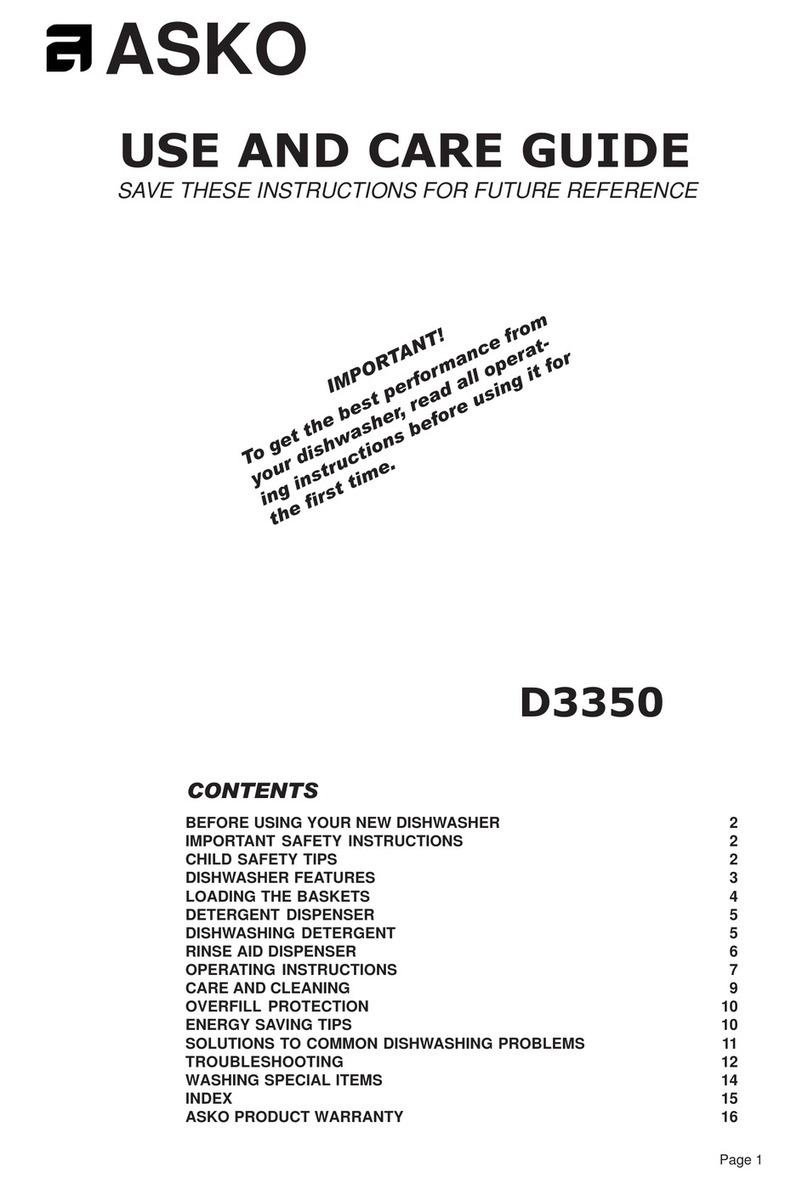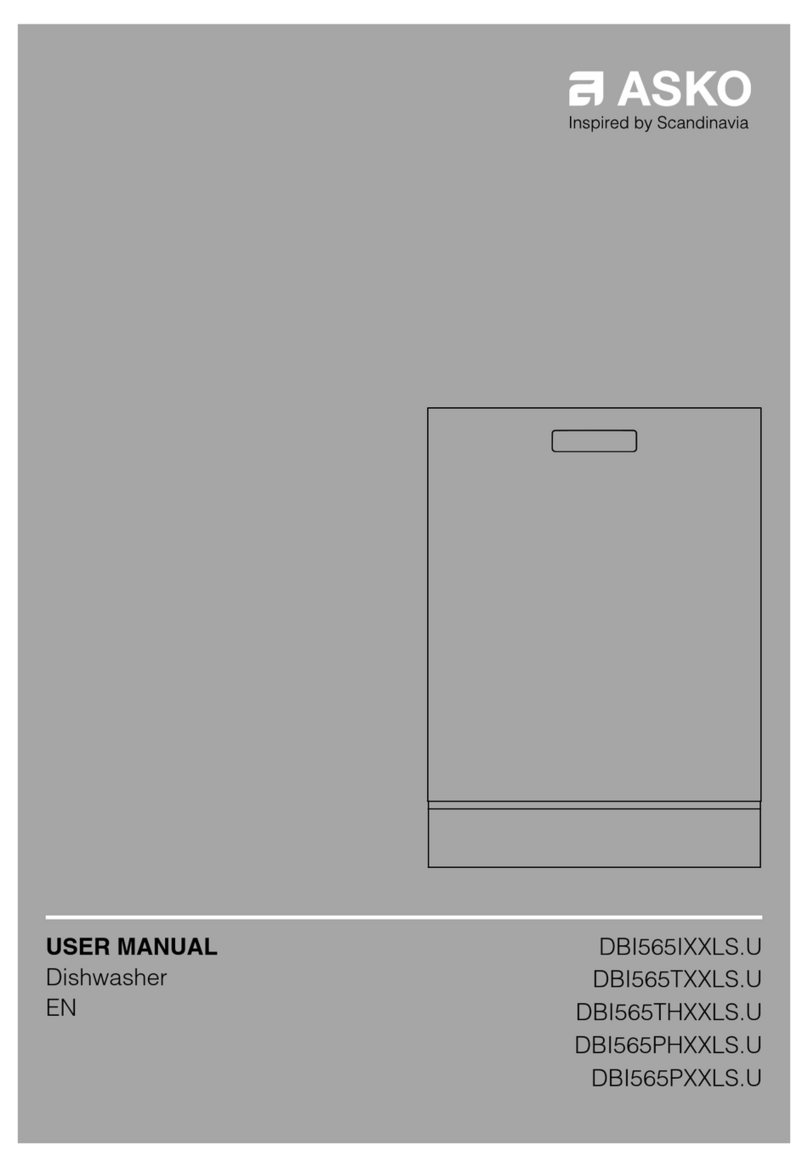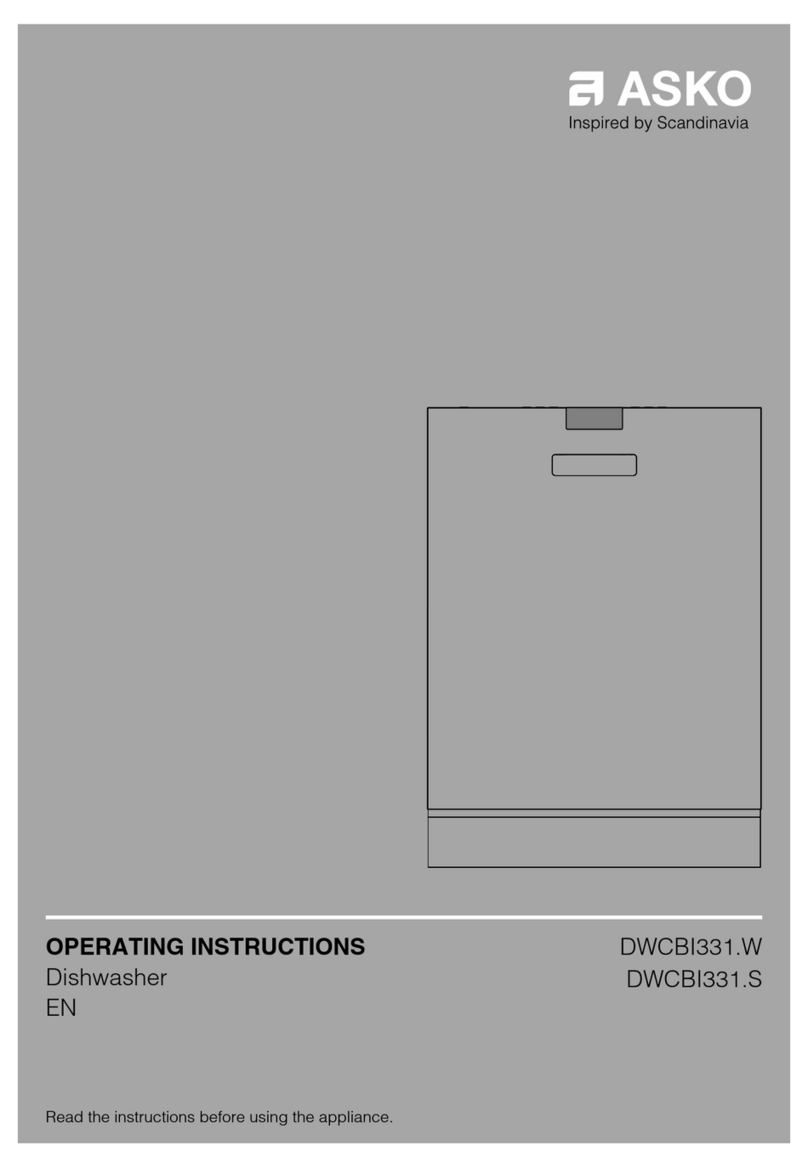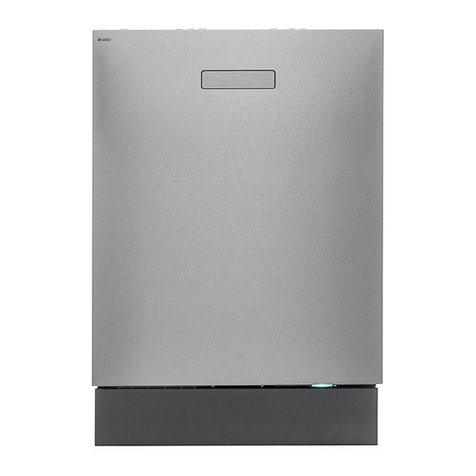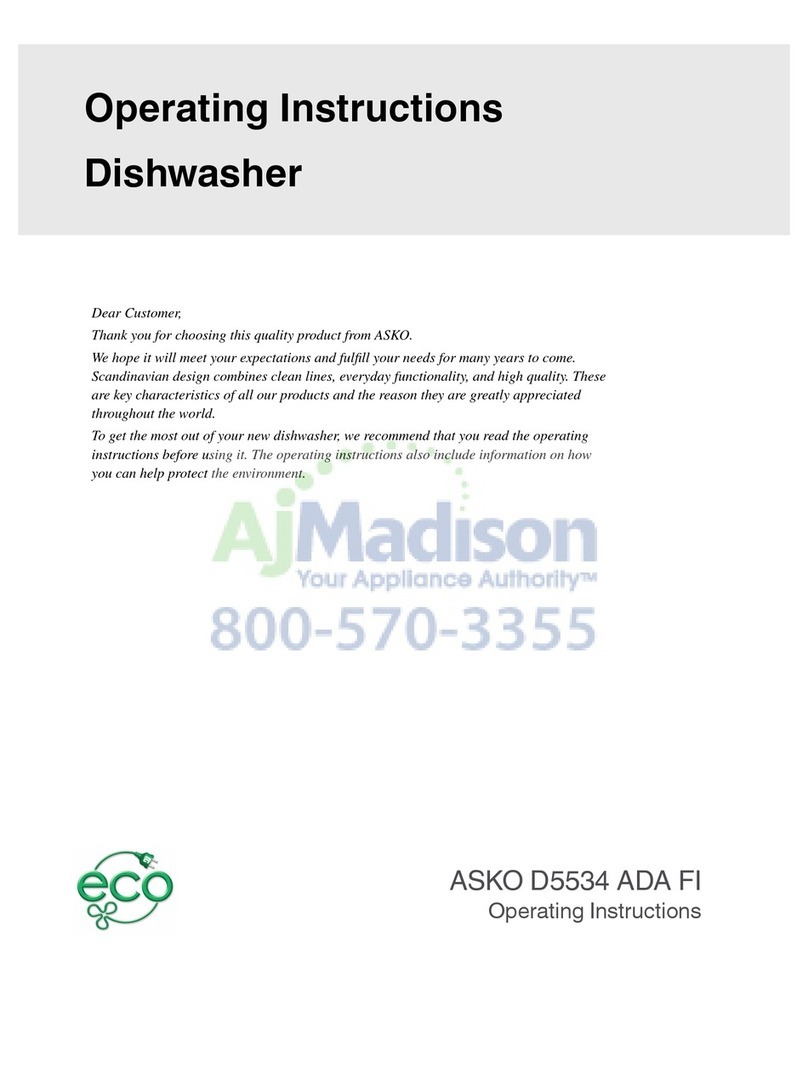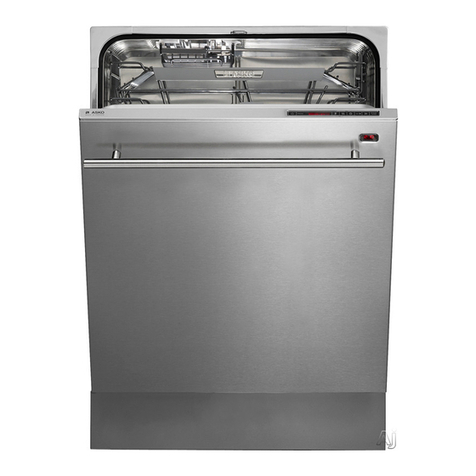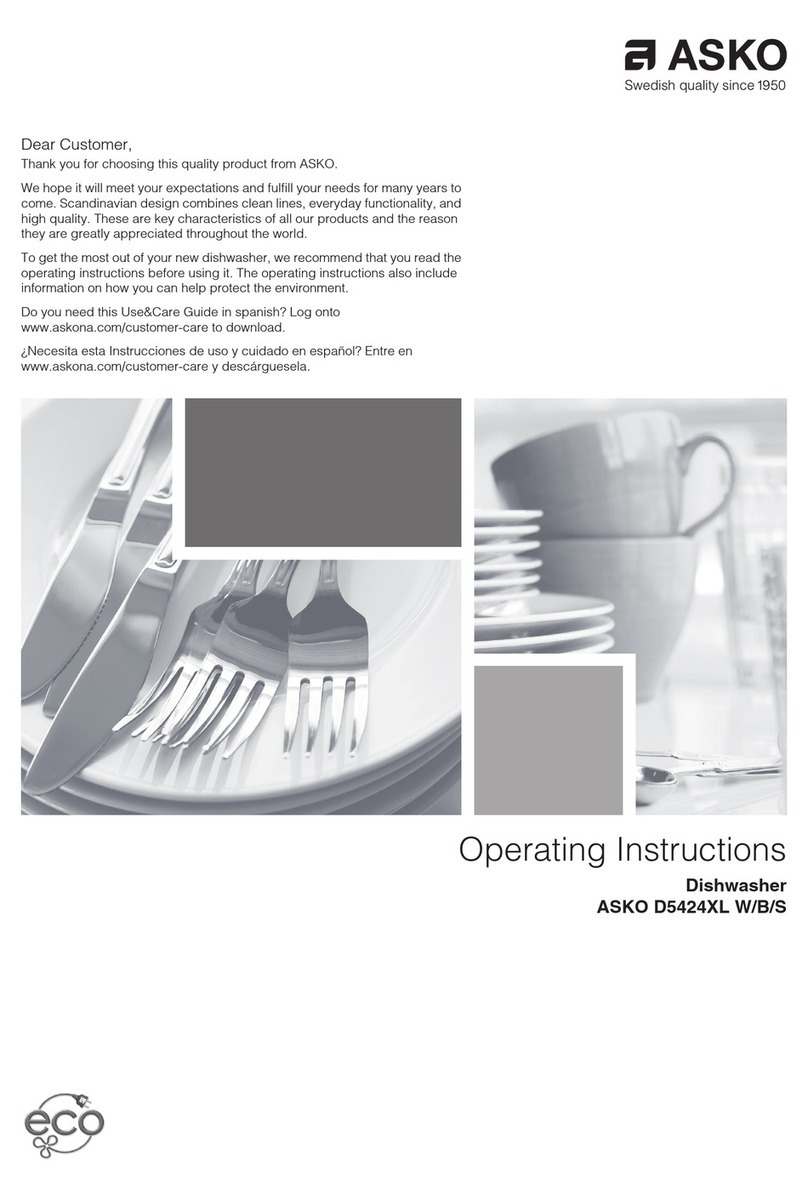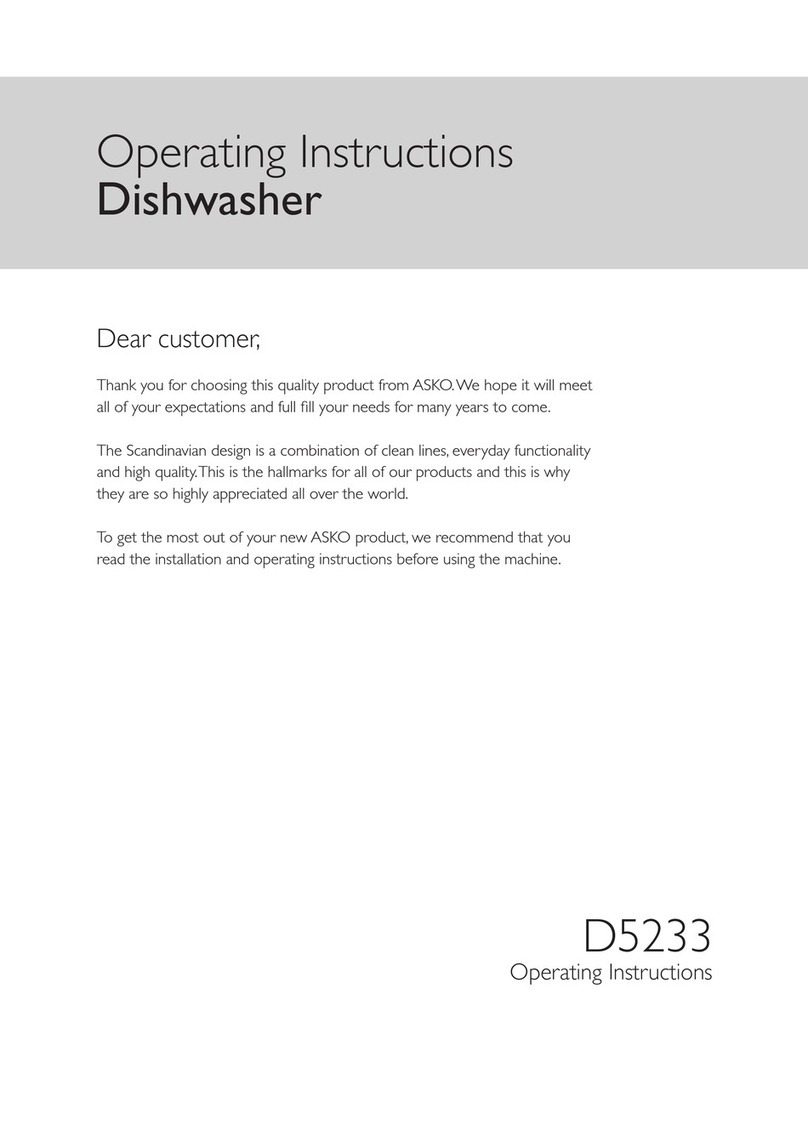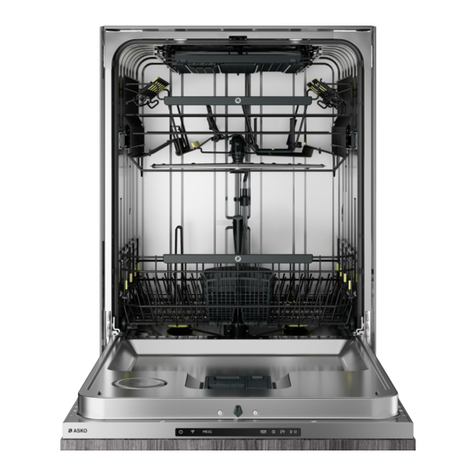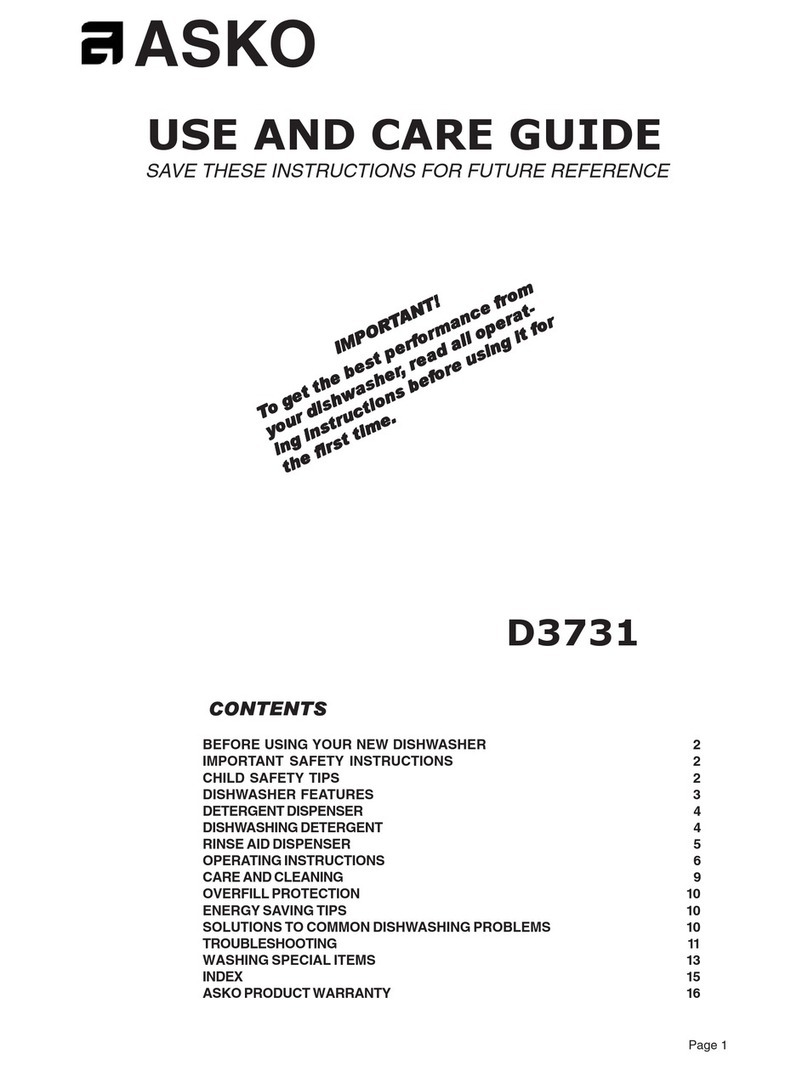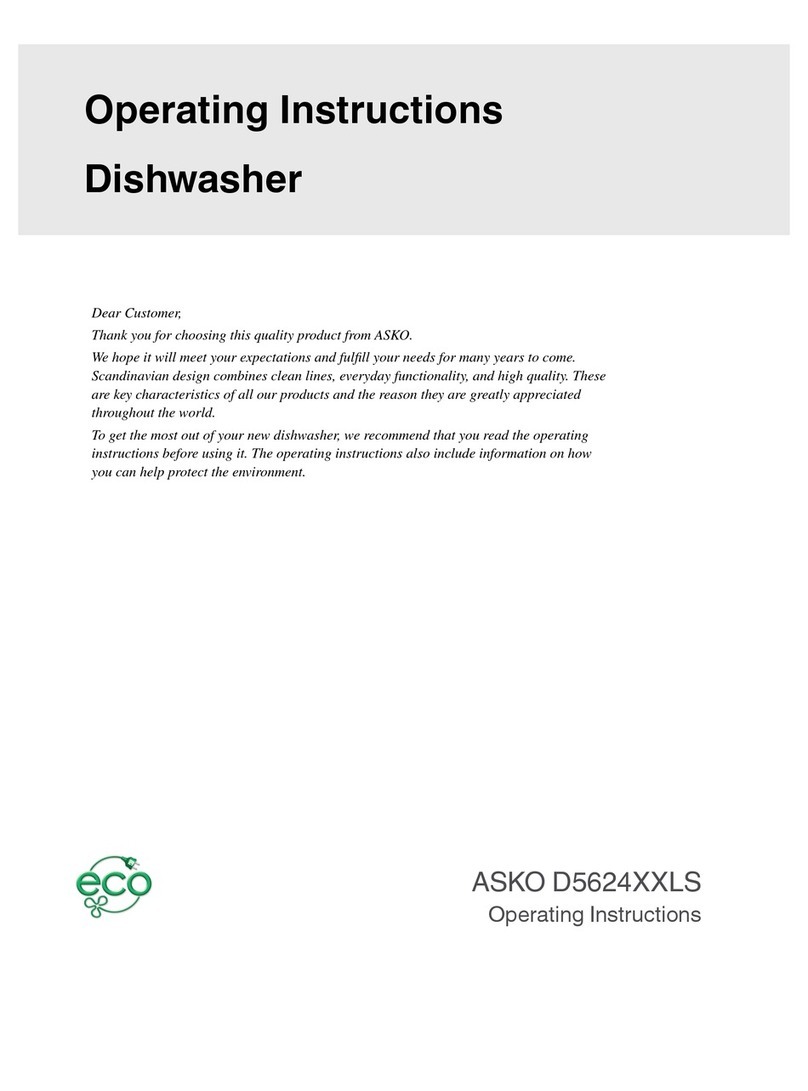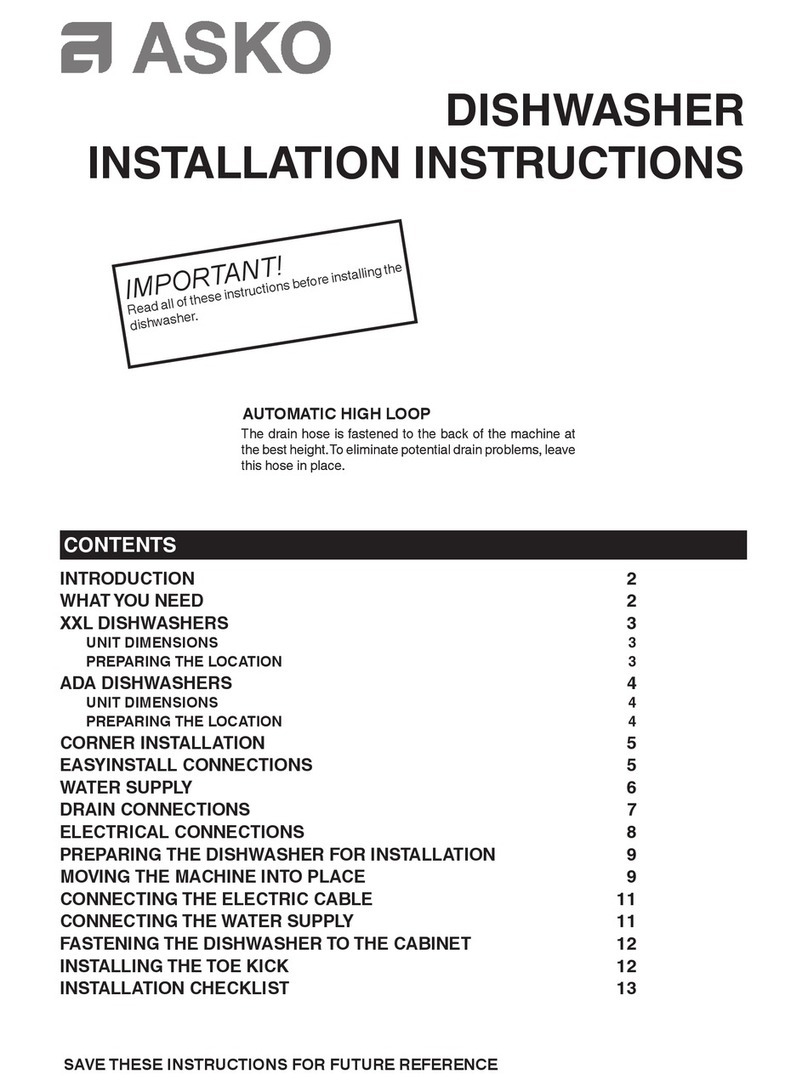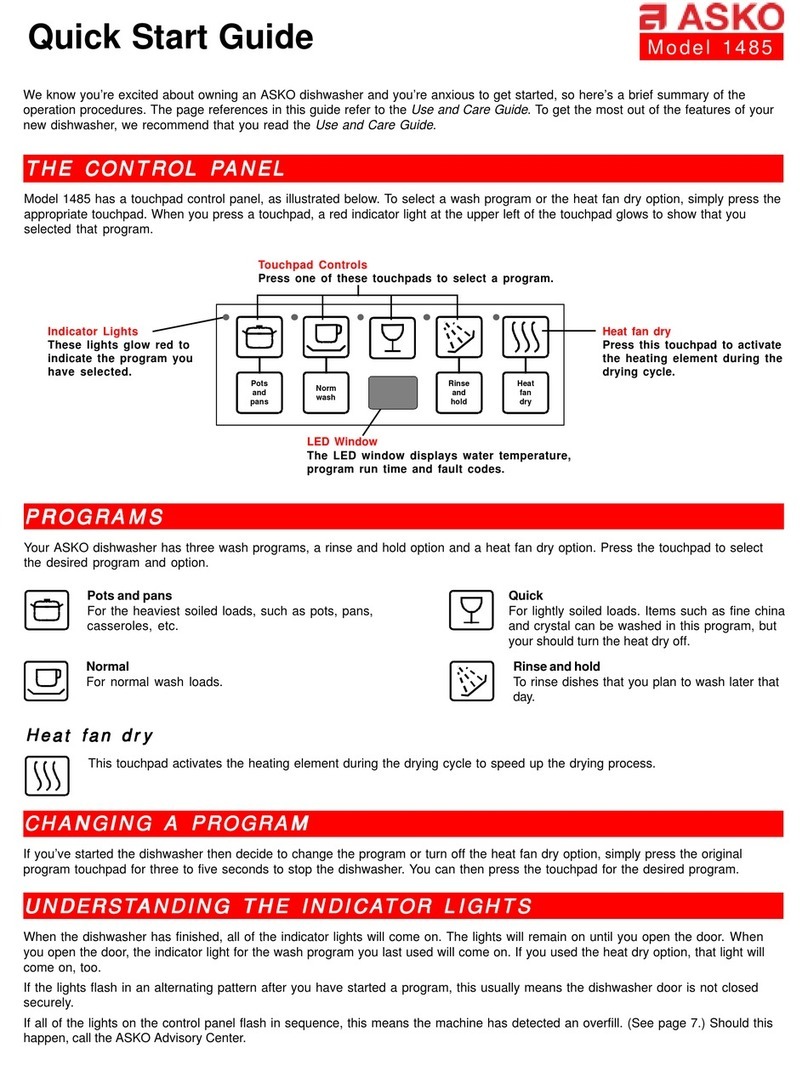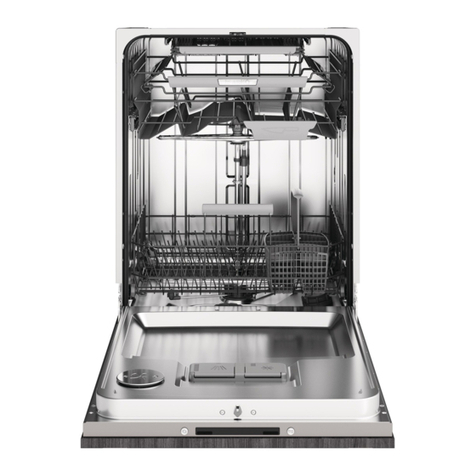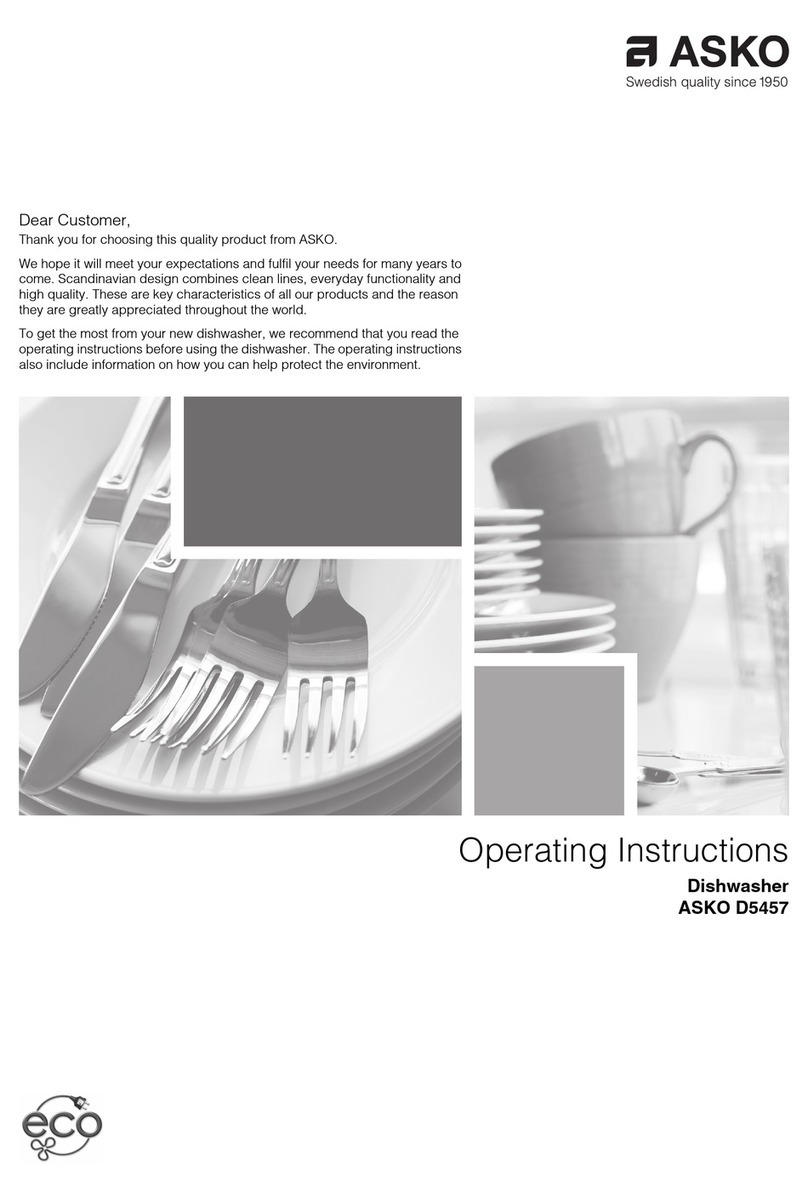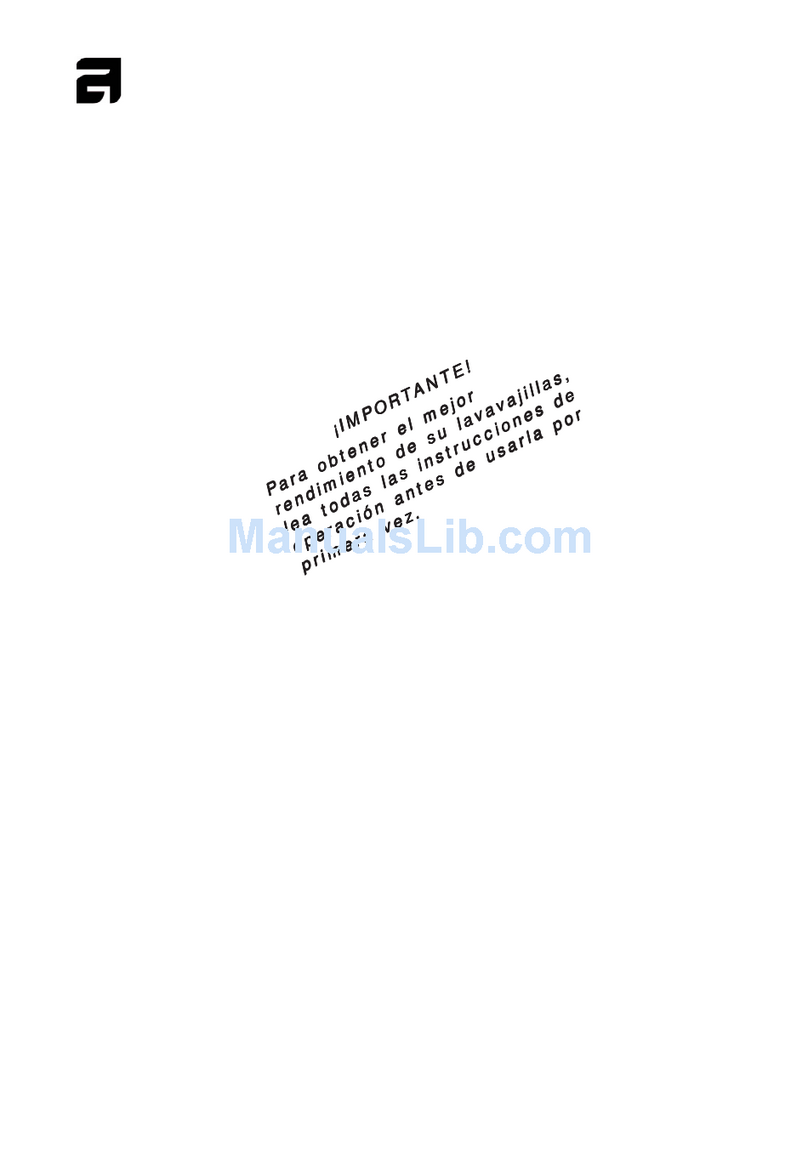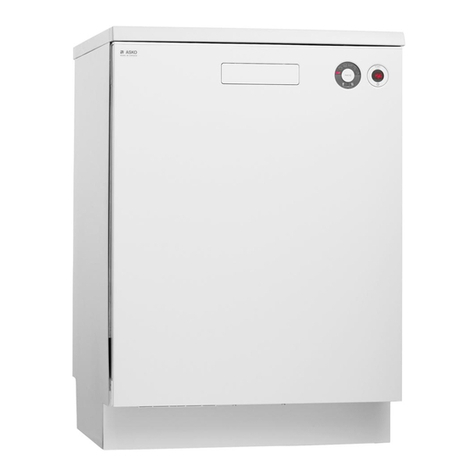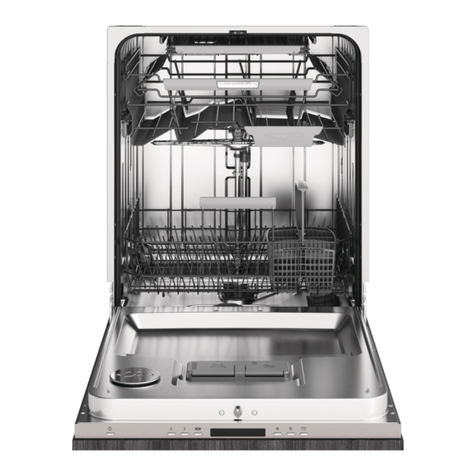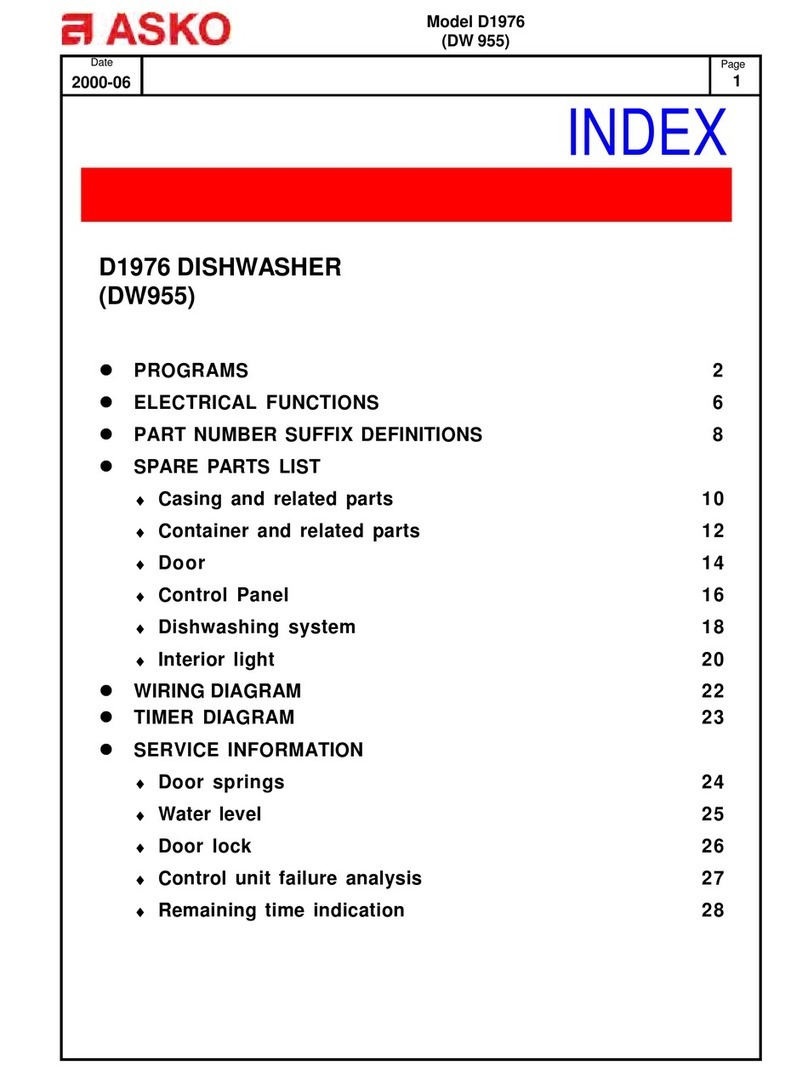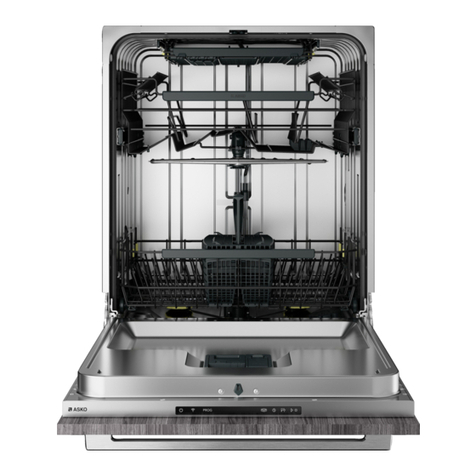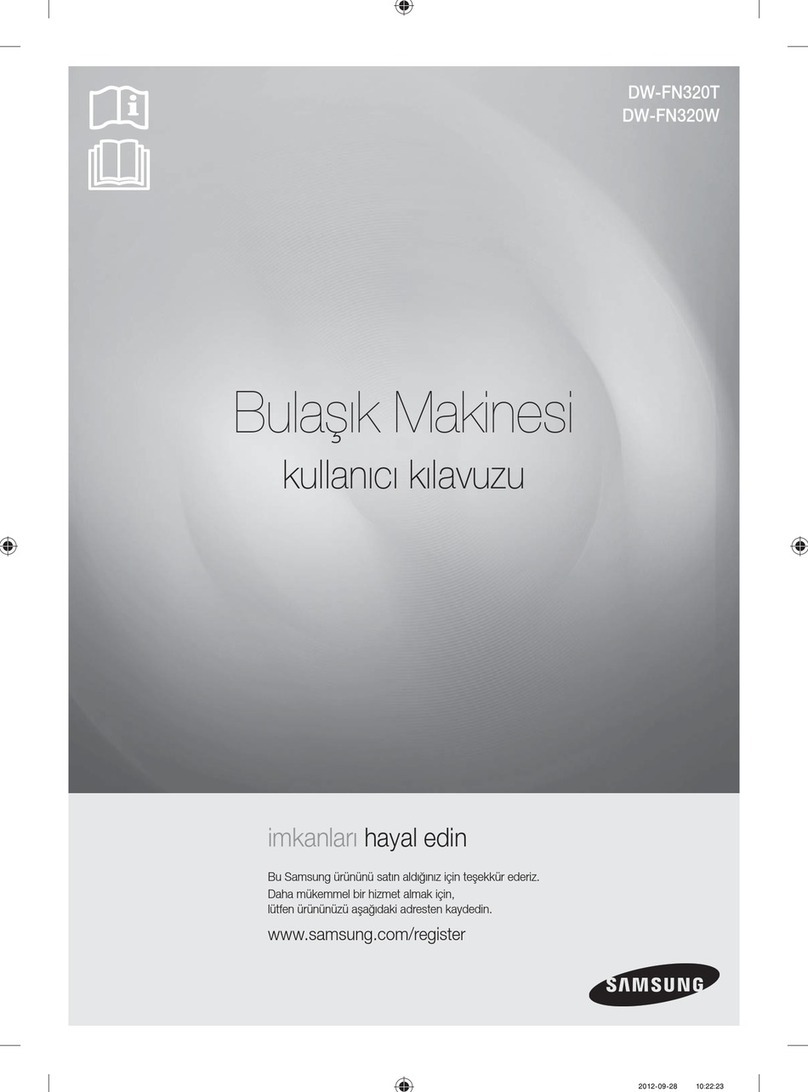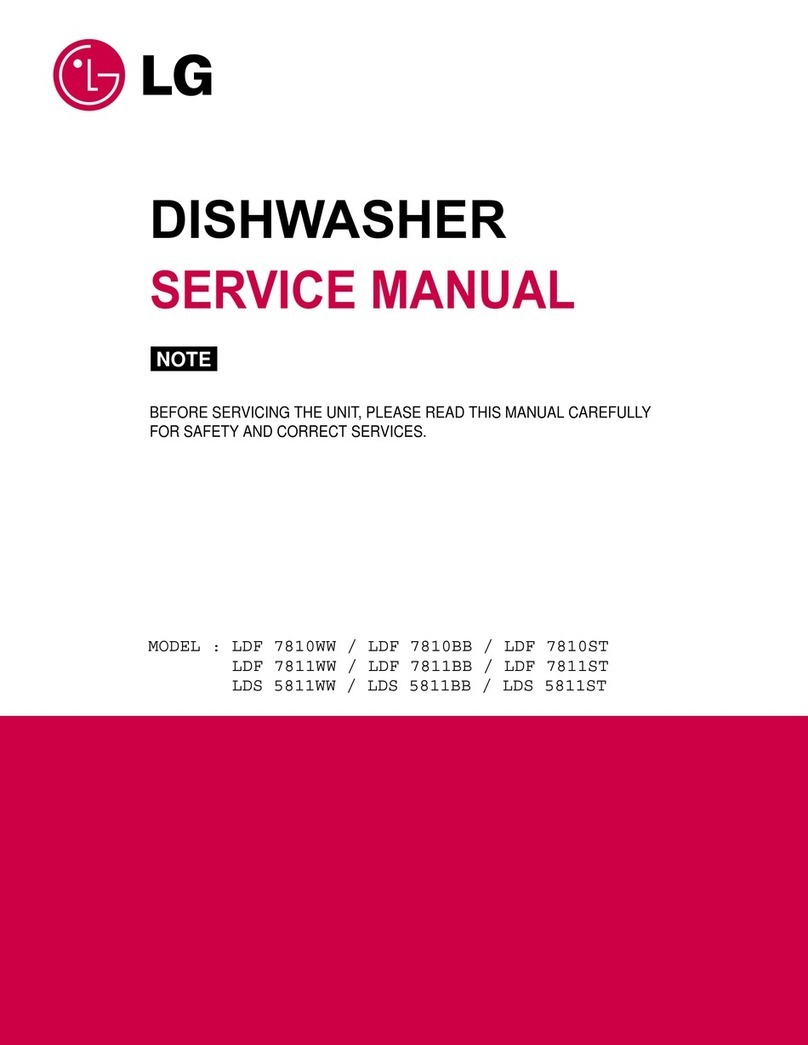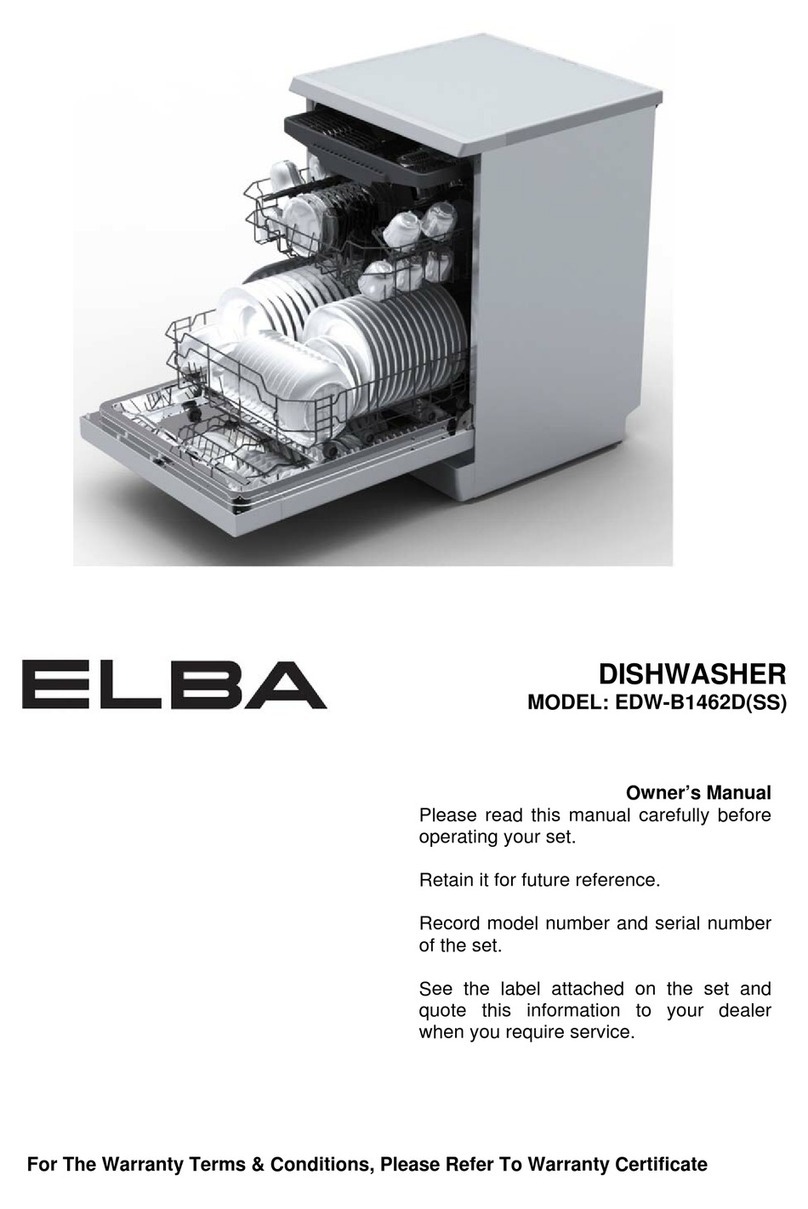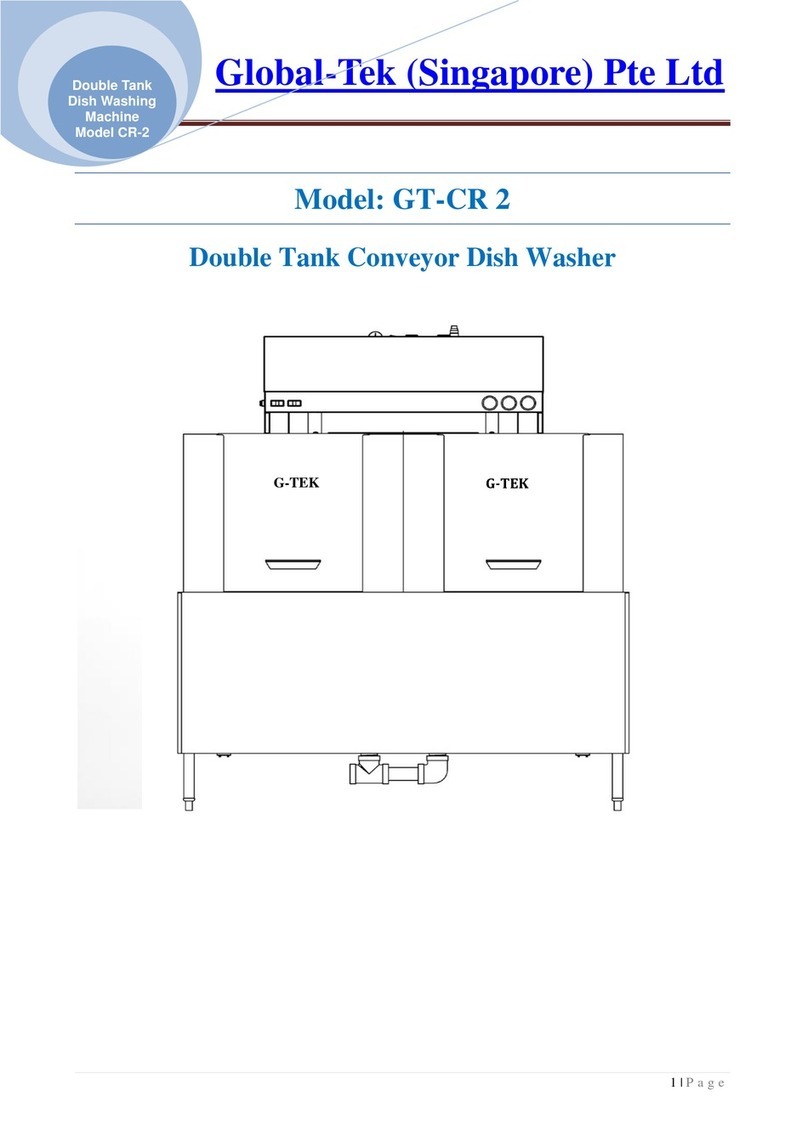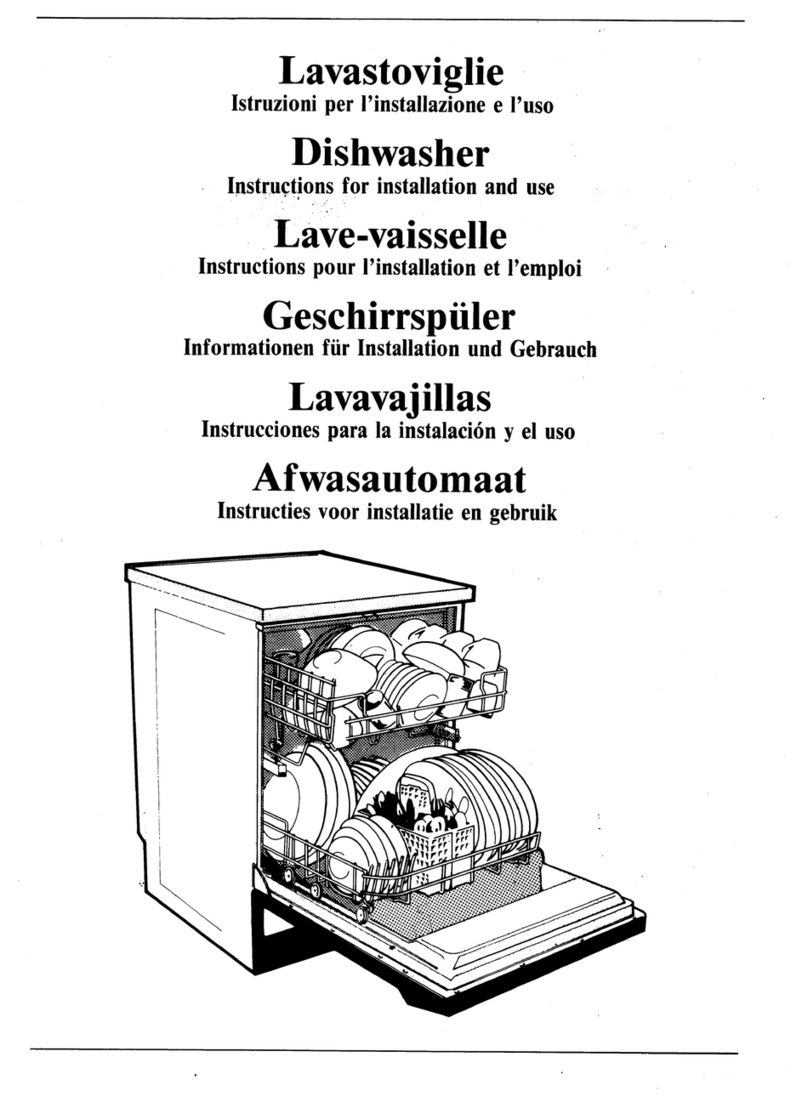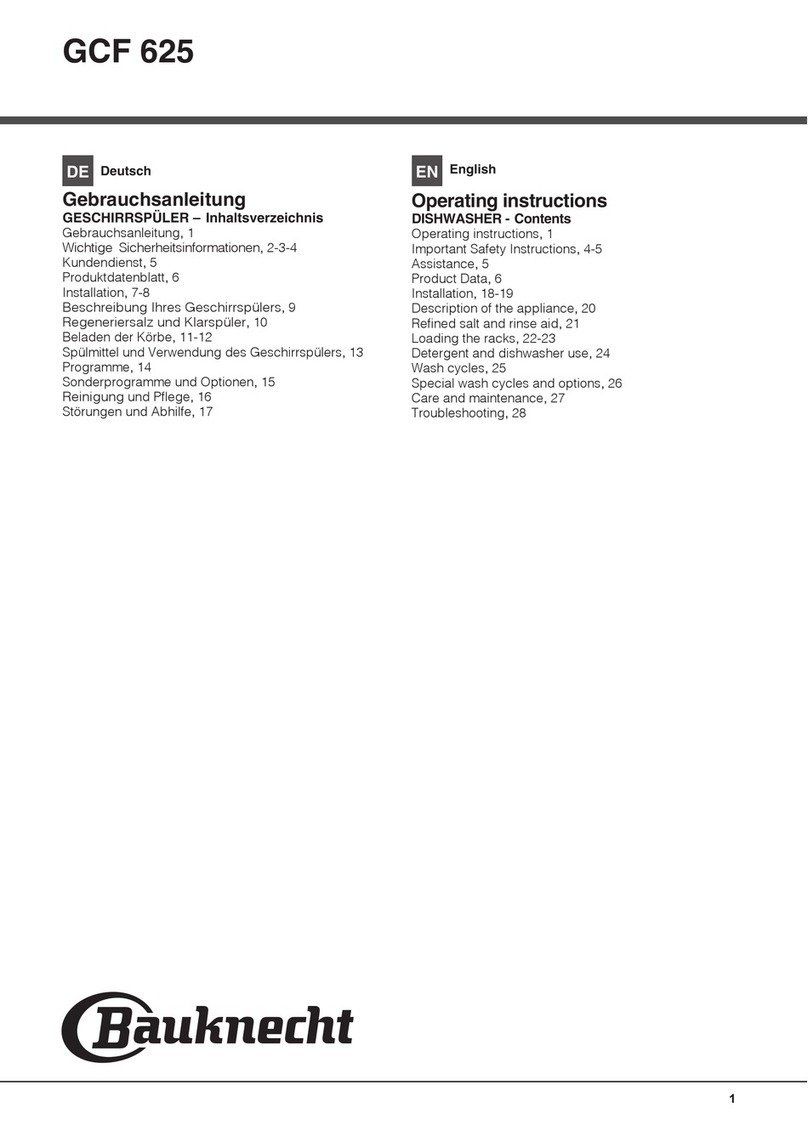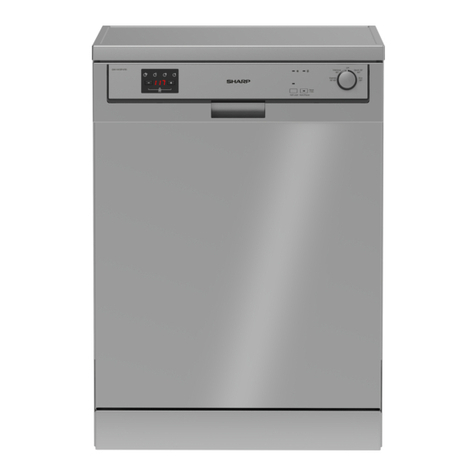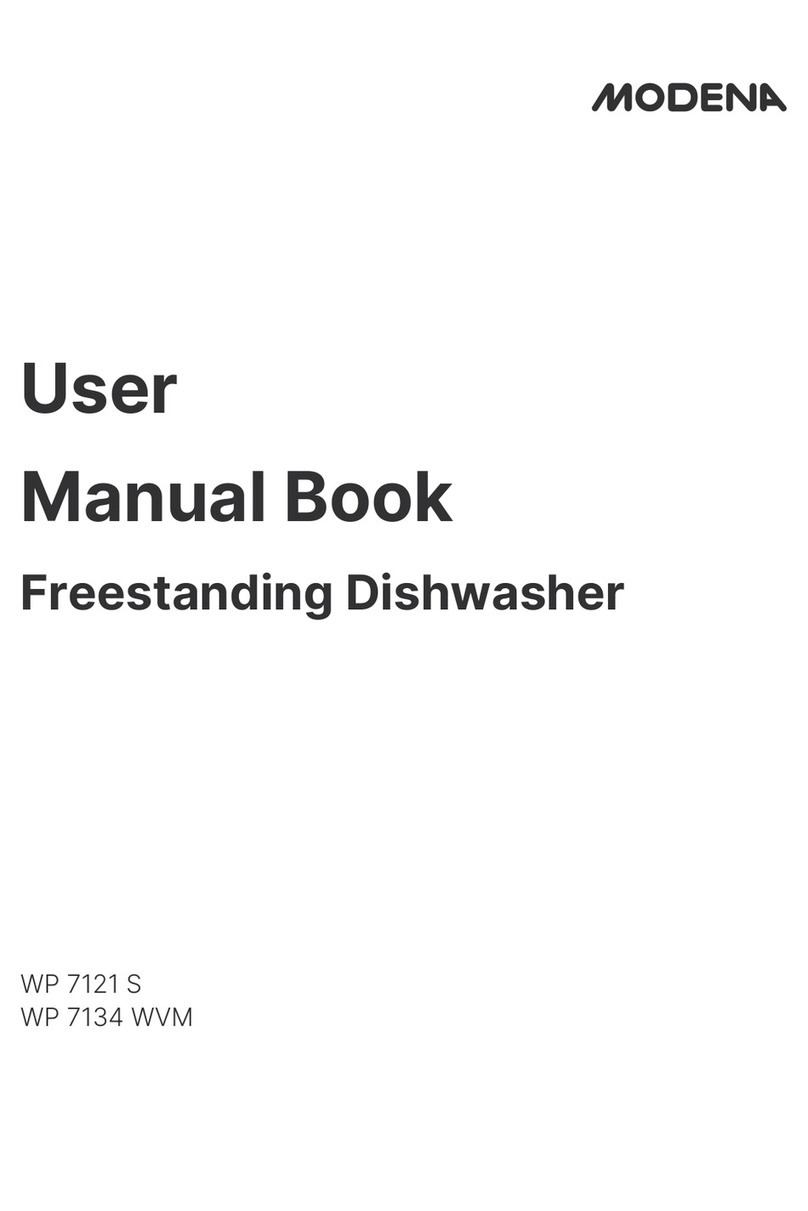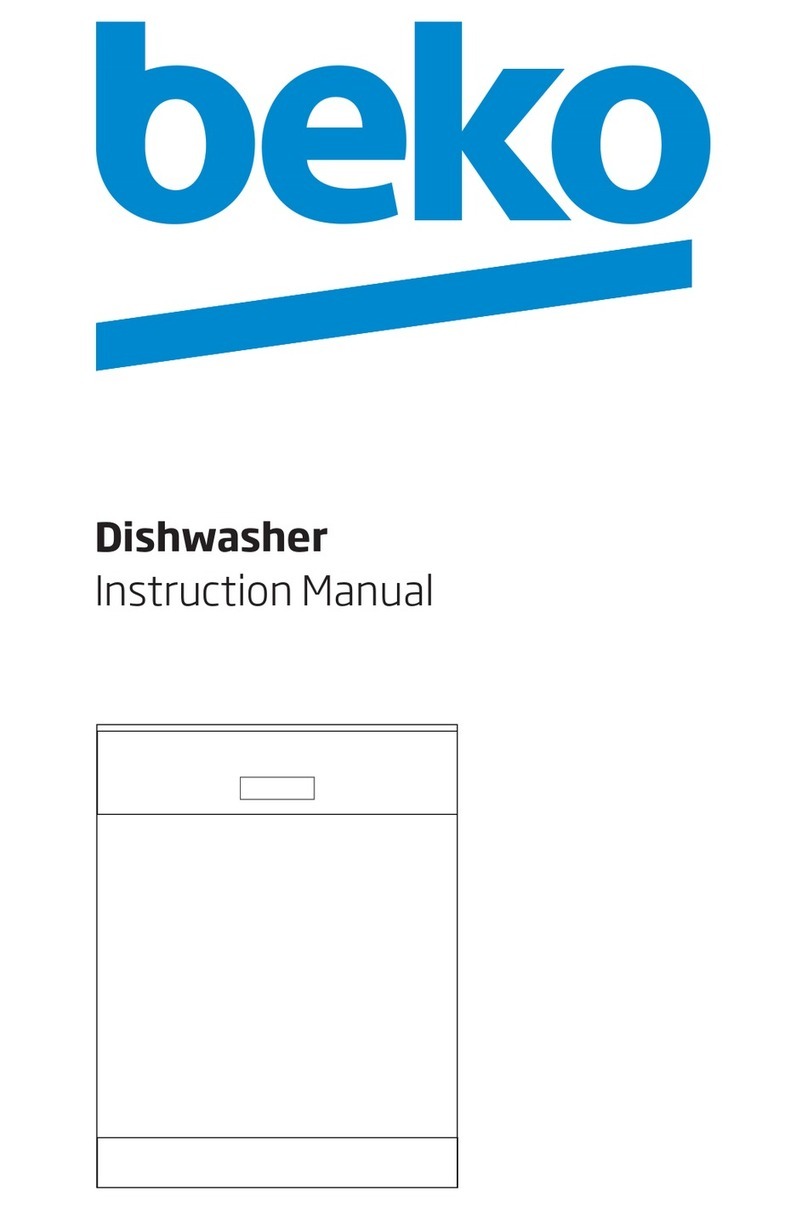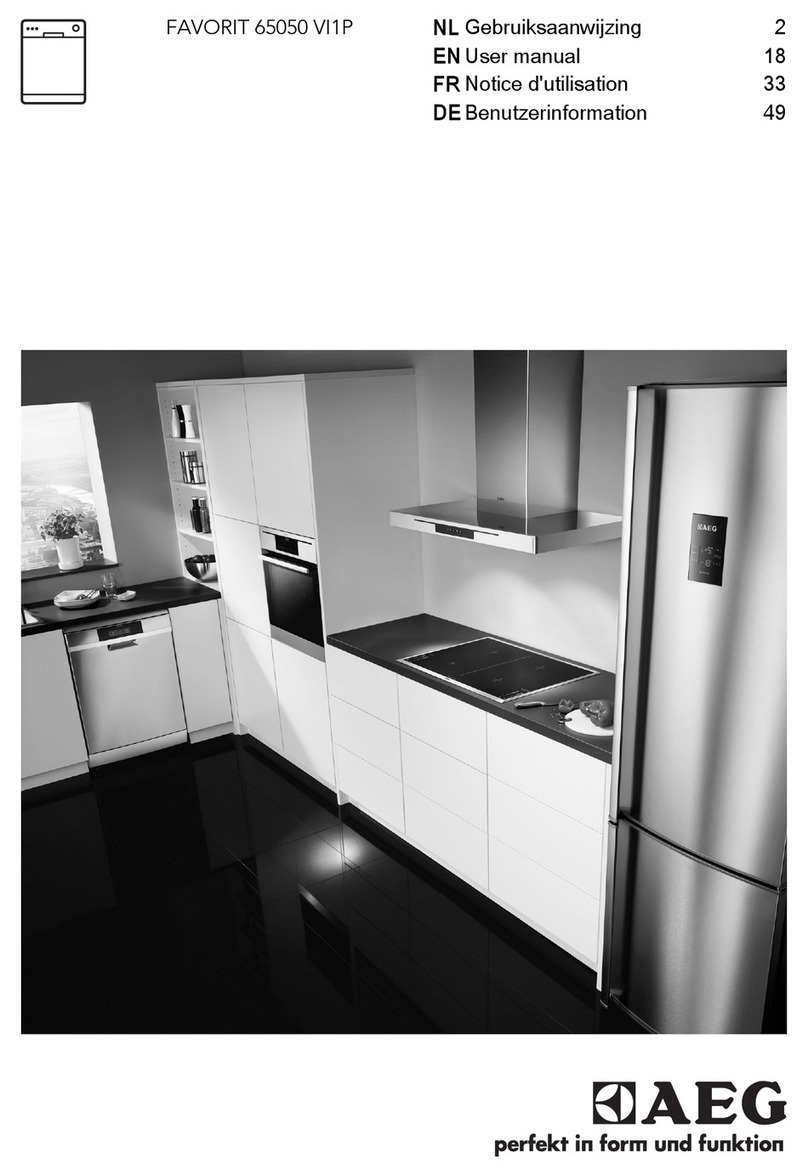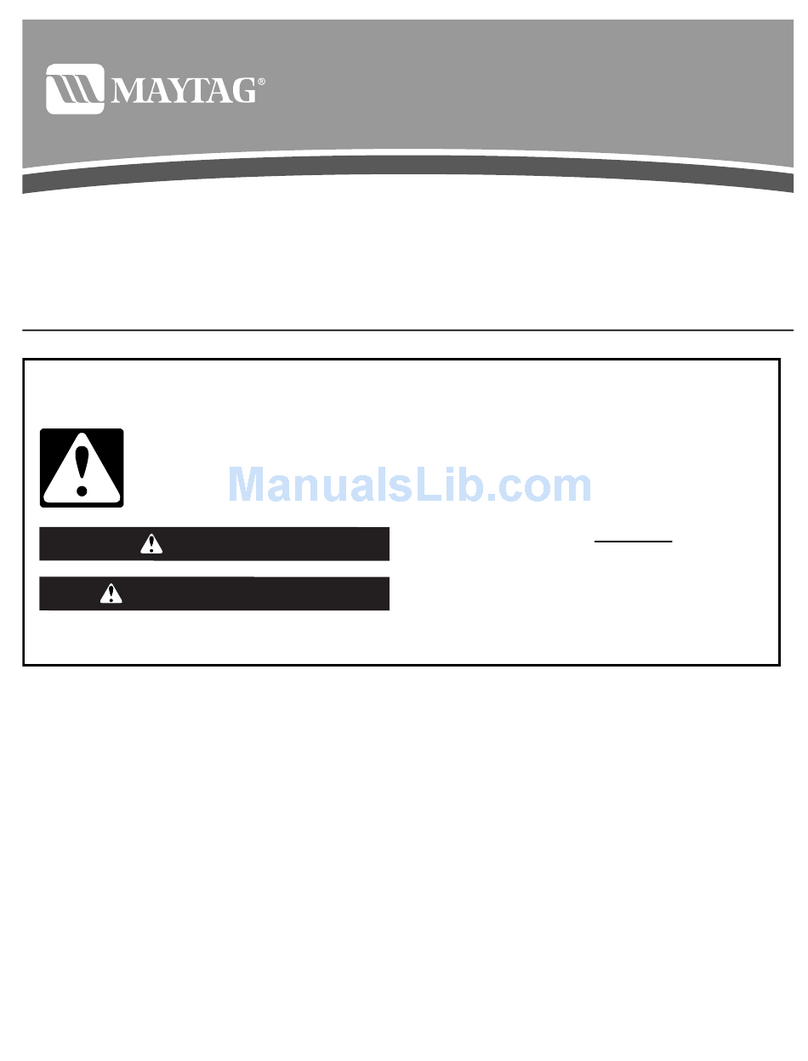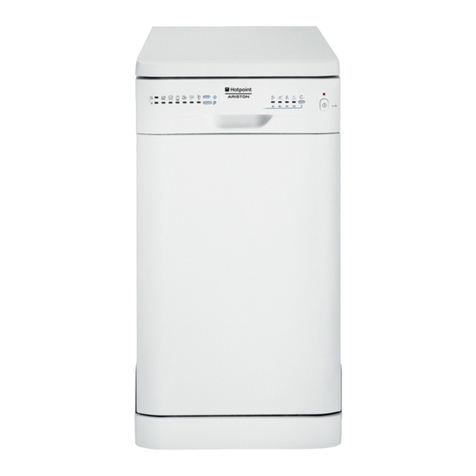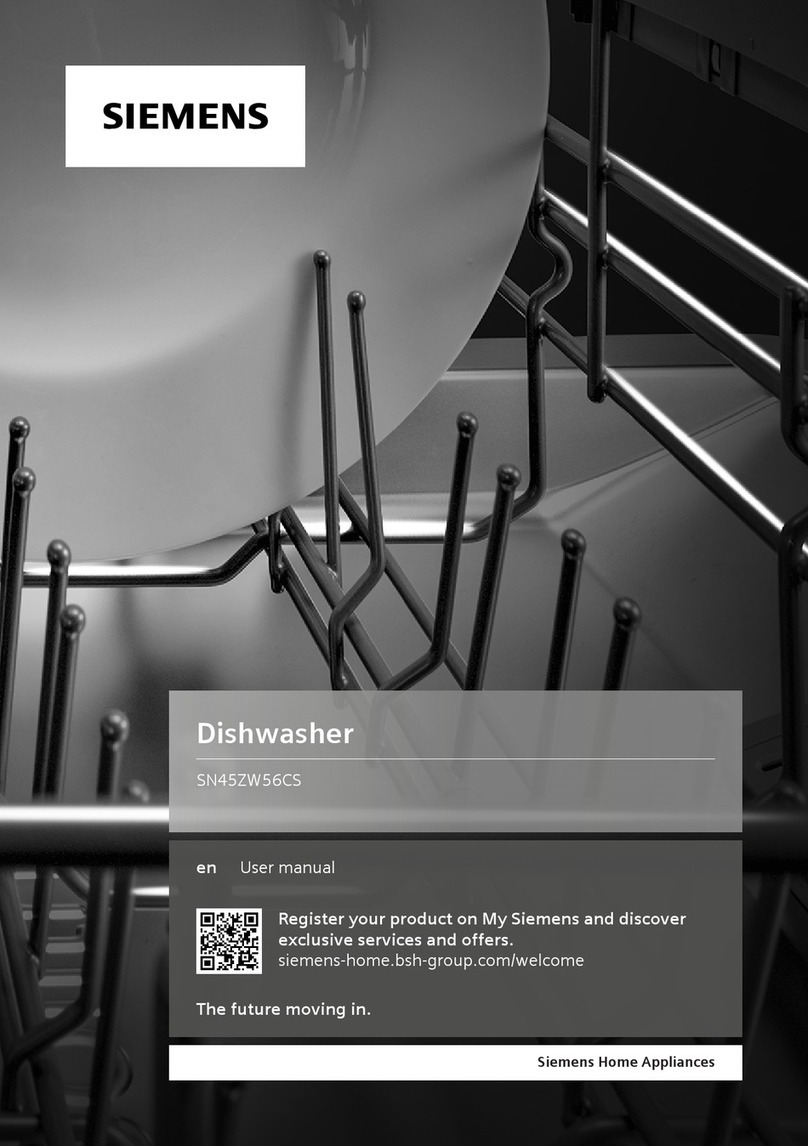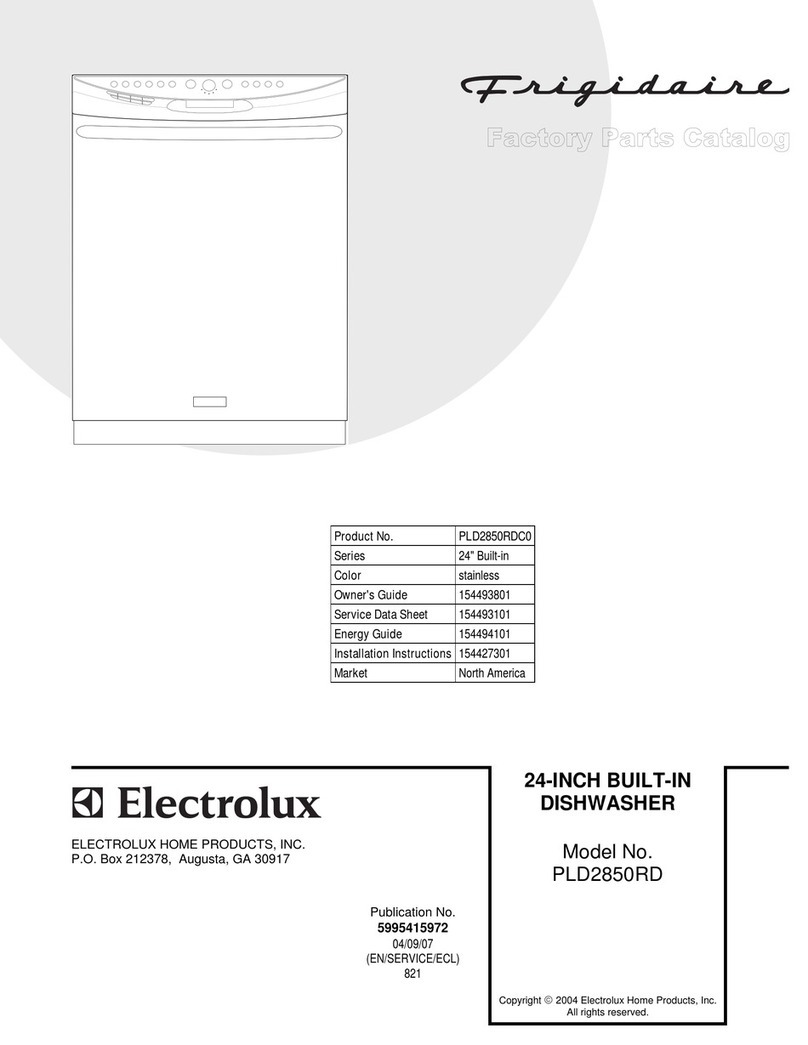6
Safety
General
• Read and keep the directions for use!
• Installation of water, drainage and electricity
must be carried out by a qualified professional.
• Do not use the dishwasher for any pur-
poses other than those stated in these
directions for use.
• Do not load the dishwasher door or the
dishwasher baskets with anything other
than dishes.
• Only use dishwasher detergent!
• Place knives and other sharp objects so
that they cannot cause injury to people or
damage the dishwasher.
Never put dishes containing solvent residue
in the machine due to risk of explosion.
Neither may dishes containing ashes, wax
or lubricating grease be washed in the
dishwasher.
Winter storage/Transport
Store the machine away from frost.
Avoid long journeys in extreme cold.Trans-
port the machine in an upright position or
lying on its back.
Overfill protection
The overfill protection starts pumping out
water and closes off the water intake if the
machine’s water level exceeds the normal
level.If the overfill protector starts up, shut
off the water supply and phone for service.
See also ‘Troubleshooting’ on pages 23-25.
Cleaning
Only use a slightly damp cloth for cleaning
around the edge of the door.Do not use a
spray bottle!Water can penetrate into the
lock and come into contact with the elec-
trical components.
Packaging materials
Sort at source in accordance with the re-
commendations of your local authority.
Scrapping
When the time comes for the machine to be
scrapped, it should immediately be ren-
dered unusable. Remove the plug and cut
off the lead as short as possible.
Contact the refuse collection department or
your local authority for information on the
correct way to dispose of the dishwasher!
The dishwasher is manufactured and la-
belled for recycling.
